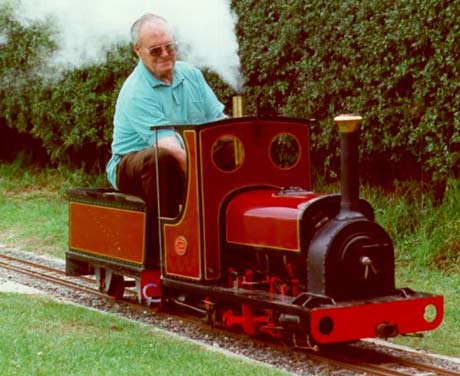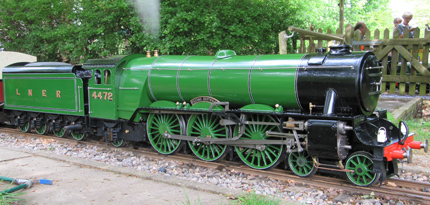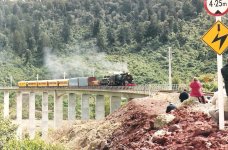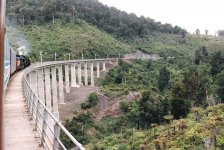Strathrspey Railway
Another standard gauge line of ten miles running from Avienmore.
Originally opened in 1863 and reopened in 2002

No.828 was built by the Caledonian Railway Company at their St. Rollox engineering workshops in the Springburn district of Glasgow. She is one of 20 of her class which were built at St. Rollox between May and November 1899. 828 herself was delivered from the works at the end of August 1899. 828 was amongst the 17 of her class which were turned out in full Caledonian Railway blue passenger livery and fitted with the Westinghouse air brake system. The 812 class locomotives were intended for use on a variety of duties all over the Caledonian's extensive system from Carlisle to Aberdeen. They could be found on the Clyde coast boat trains. They could be found working local and semi fast services around Glasgow and Edinburgh. They were also at home in more rural surroundings and could be seen working the branch lines around Perth as well as out on the main line between Perth, Forfar and Aberdeen.828 herself was allocated new to Aberdeen Ferryhill engine shed. For nearly 20 years she worked on local trains on the main line between Aberdeen and Laurencekirk. A popular Saturday destination for urbanised Aberdonians was an escape to the peace and cleanliness of the Angus glens. For many summer Saturdays in the Edwardian era before the First World War 828 could be seen on excursions from Aberdeen to Edzell.
LMS OwnershipAfter the First World War the Caledonian railway was grouped with the companies forming the London Midland and Scottish Railway Company (LMS). In the new numbering system introduced by the LMS 828 became No. 17566. Under the ownership of the LMS the 812 class locomotives underwent some significant changes. The most obvious change was that the LMS fitted a new boiler and smokebox which 828 still carries. The LMS boiler is based closely on the original Caledonian boiler but has a number of design differences - the most significant of which are hidden within the boiler. The boiler which 828 carries was originally manufactured by the LMS in the mid-1920s. Visually it differs slightly from the original Caledonian boiler but in terms of steam generation there is no significant difference. The LMS smokebox differs from the Caledonian prototype by having 'snap-headed' rivets. Caledonian practice required that smokebox rivets should be countersunk and finished flush with the plating. Other changes introduced by the LMS involved replacing McIntosh's original marine pattern connecting rods with the strap-and-cotter type preferred by the LMS.
Nationalisation - British Railways Ownership and WithdrawalIn 1948, when nationalisation of the Britain's railways resulted in the formation of British Railways (BR), 828 underwent her last but one change of ownership. As a British Railways locomotive she was renumbered 57566 and began her last 15 years of service on the national network. During her period of BR ownership 828 was based in the west of Scotland and was withdrawn from Ardrossan MPD in August 1963. At the time of withdrawal (for scrapping) she had rendered 64 years of faithful service to her three owners and she had accumulated a total running mileage of almost one million miles. Changes made to her by BR were few, the 812 class was approaching the end of its working life and there was little incentive to spend much money on them. However, one very significant change which was made to 828 in the early 1950s was the removal of the Westinghouse compressed air braking equipment and its replacement with a combination vacuum and steam brake assembly. According to the Engine Record cards which are still in existence the cost of replacing the Westinghouse brake equipment with vacuum / steam equipment amounted to just under £16!! BR intended that 828's story should have ended ignominiously in a scrapyard - the fate shared by all 78 of her sister 812 class locomotives. Without the determined efforts of a band of Scottish railway enthusiasts this would undoubtedly have been the case. A public meeting held in Glasgow in January 1962 resulted in the formation of the Scottish Locomotive Preservation Fund (SLPF). The objective of the SLPF was to preserve at least one (or more) Caledonian Railway locomotives - not as museum pieces - but in full working order. Although it was not known at that far-off meeting over forty years ago, this was the turning point which saved 828 from the scrapyard.
Unfortunately this is a new website with very little information regarding other steam and diesel locomotives but with ten miles of track has to be worth investigation.
teddy












